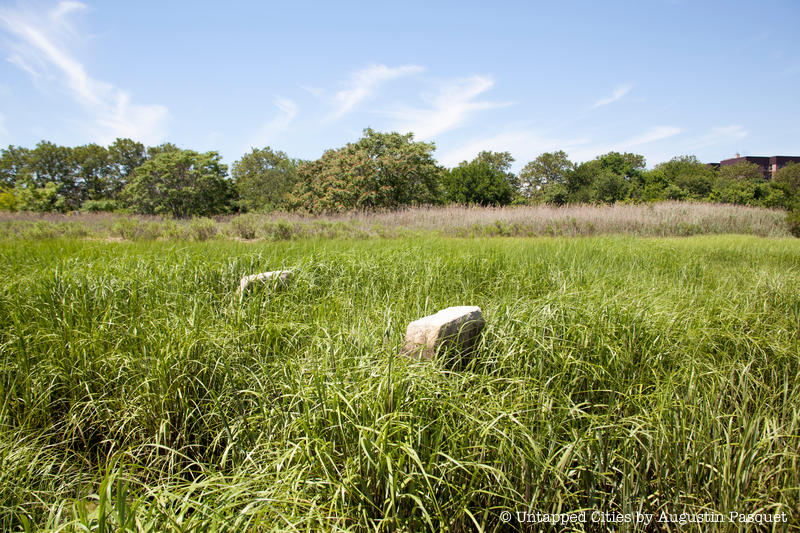6. 20,000+ Acres of Parkland
 Marine Park, Brooklyn
Marine Park, Brooklyn
Spring Creek Park in Howard Beach has the “largest amount of undeveloped land and wetlands in the northern Jamaica Bay area,” according to the NYC Parks Department. We have to thank Robert Moses for these untouched waterfront areas, which he acquired through condemnation in 1938 as part of the development of the Belt Parkway, which included the Shore Parkway. Before this, the area was an illegal dumping ground and host to noxious industrial activities (although city trash is what also filled in parts of Marine Park). The salt march of Spring Creek Park plays host to a diversity of wildlife. Birdlife, including egrets, great blue herons, mallard ducks, pheasants, and wildlife like muskrats, deer and raccoons abound.
In Marine Park, there were grand plans to build a park and athletic facility according to plan that won a silver medal at the 1936 Olympics. But the venture was waylaid by corruption charges within Mayor James Walker’s administration and the plan and ongoing construction at Marine Park became a symbol of the waste, an easy target for new mayor Fiorello LaGuardia, in his quest to clean up New York City and Robert Moses, newly appointed as commissioner of the Parks Department. 5,400 workers were assigned to the Marine Park plan and were said to be mostly lounging around. In addition, Lay was not in a good position with Moses, having repeatedly opposed the master builder’s efforts on Long Island. Moses even had a nickname for him: “Landscaper Lay.” As Thomas J. Campenella notes in the article, “Playground of the Century: A Political and Design History of New York City’s Greatest Unbuilt Park,” the failure to built this park ironically led to the preservation of the natural tidal landscape in Marine Park.
The NYC Parks Department reports that with Moses as Parks Commissioner, the city added “17 miles of beaches, and 84 miles of parkways. Park acreage had increased from 14,000 acres to 34,673 acres.”





